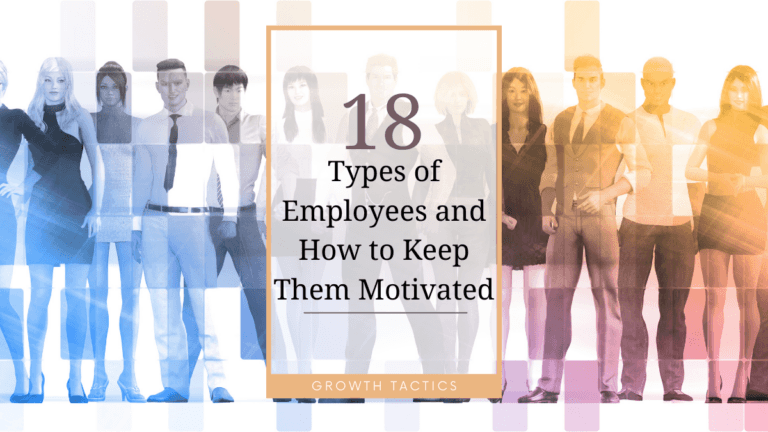Excellence in business starts with a diverse and inclusive team. Imagine a workforce rich in perspectives and backgrounds. That’s the power of inclusive hiring.
Such practices are your ticket to recruiting the best talent, irrespective of gender, race, or other characteristics, and they drive innovation and productivity.
Let’s explore the top strategies for building an exceptional, inclusive team. Your journey to superior performance and meaningful outcomes begins here.

Jump To Section
Understanding Inclusive Hiring
Inclusive hiring is more than just a buzzword. It’s a fundamental concept that fosters fairness, equality, and diversity in the workplace.
Simply put, inclusive hiring practices are strategies and processes that aim to remove barriers and biases, ensuring that all individuals, regardless of their background or characteristics, have equal access and opportunities in the hiring process.
When we talk about inclusive hiring, we’re talking about embracing diversity and actively seeking out candidates from different walks of life. It means valuing and respecting the unique perspectives, experiences, and talents that individuals from various backgrounds can bring to an organization.
By implementing inclusive hiring practices, companies are better equipped to build a diverse workforce that reflects the wider society. This diversity brings together individuals with different perspectives, skills, and ideas, ultimately leading to enhanced creativity, innovation, and problem-solving.
Inclusive hiring goes beyond hiring for representation. It involves creating an environment where diverse individuals are not only recruited but also empowered, supported, and given equal opportunities to thrive and advance. It’s about fostering an inclusive culture where everyone feels included, respected, and valued.

Importance of Inclusive Recruitment
In today’s dynamic and interconnected world, the need for a diverse and inclusive workforce has never been more critical. Companies that understand and value the benefits of diversity are at a significant advantage. Why, you might ask? Well, let me explain.
A diverse workforce brings together individuals with different backgrounds, experiences, and perspectives. This diversity sparks creativity, innovation, and a wide range of ideas, leading to better problem-solving and decision-making. It enables companies to tap into a wealth of unique talents, skills, and knowledge that might otherwise go untapped.
Moreover, a diverse workforce reflects the society in which we live. By embracing diversity, companies demonstrate their commitment to equality and social responsibility. Embracing diversity is not just about ticking boxes; it’s about creating a fair and inclusive environment where everyone feels valued, respected, and empowered to contribute their best.
Best Practices for Inclusive Hiring: Creating a Fair and Equitable Recruitment Process

1. Unbiased Job Descriptions and Advertisements
When it comes to inclusive hiring, it all starts with the job description. Craft your job descriptions and advertisements carefully, ensuring they are free of bias and inclusive language. Focus on the skills, qualifications, and experiences required for the role rather than specific demographics. By using gender-neutral language and avoiding stereotypes, you attract a wider range of candidates and make them feel valued and encouraged to apply.
2. Equal Opportunity for Candidates
To create an inclusive recruitment process, it’s crucial to provide equal opportunities for all candidates. Treat each applicant fairly and ensure that they are evaluated based on their skills, qualifications, and potential to succeed in the role. Avoid making assumptions or judgments based on personal biases. Apply standardized processes and criteria to assess candidates, supporting a level playing field for everyone.
3. Providing Training and Support for Hiring Managers
Hiring managers play a crucial role in the inclusive hiring process. Provide them with training and support on diversity, inclusion, and unconscious bias. Equip them with the knowledge and tools to recognize and challenge their biases, ensuring they evaluate candidates based on their merit and potential. By investing in their development, you empower hiring managers to create a more inclusive and equitable hiring process.
4. Ensuring Fair and Transparent Selection Process
Transparency is key in fostering an inclusive hiring process. Communicate clearly with candidates about the selection process, timelines, and evaluation criteria. Ensure that the decision-making process is fair and objective, providing timely updates and feedback to candidates. Transparency builds trust and confidence among candidates, enhancing the overall candidate experience and perception of your organization.
5. Investing in Diversity and Inclusion Programs
To truly embrace inclusive hiring, it’s important to invest in diversity and inclusion programs within your organization. These programs can include initiatives such as employee resource groups, mentorship programs, unconscious bias training, and diversity recruitment initiatives. By creating a supportive environment that values diversity, you attract and retain top talent from various backgrounds, fostering innovation and growth within your organization.
6. Evaluating and Measuring the Effectiveness of Inclusive Hiring
To ensure the effectiveness of your inclusive hiring efforts, it’s essential to evaluate and measure the impact of your initiatives. Set clear goals and metrics to assess the diversity and inclusiveness of your workforce. Regularly review your recruitment processes, diversity programs, and employee feedback to identify areas for improvement. By monitoring progress and making data-driven decisions, you can continuously refine and enhance your inclusive hiring practices.
Incorporating these best practices into your recruitment process will help create an inclusive and equitable environment for all candidates. Remember, inclusive hiring is an ongoing commitment that requires continuous effort and dedication. By embracing diversity and fostering an inclusive culture, you not only attract top talent but also promote creativity, innovation, and success within your organization.

Implementing Inclusive Hiring Practices: Building a Dynamic and Diverse Workforce
Attracting diverse talent is only the first step towards creating an inclusive workplace. The next step is to implement inclusive hiring practices that support a fair and equitable recruitment process. In this section, we’ll explore four key strategies for implementing inclusive hiring practices: creating an inclusive workplace culture, the inclusive recruitment process, improving the interview process, and building a diverse talent pipeline.
1. Creating an Inclusive Workplace Culture
To attract and retain diverse talent, it’s essential to foster an inclusive workplace culture. This means creating a supportive environment that values diversity, encourages open communication, and promotes equal opportunities for growth and development. Foster an inclusive culture by implementing initiatives such as unconscious bias training, employee resource groups, and mentorship programs. By investing in employee well-being and development, you create a more engaged and motivated workforce.
2. The Inclusive Recruitment Process
An inclusive recruitment process takes into account the needs and experiences of a diverse range of candidates. Ensure that your recruitment process is free from bias by implementing strategies such as blind hiring and standardized evaluation criteria. Use inclusive language in job descriptions and advertisements, and provide equal opportunities and support for all candidates. Transparent communication with candidates about the selection process, timelines, and evaluations criteria is crucial for maintaining trust and promoting a positive candidate experience.
3. Improving the Interview Process
The interview process is a critical stage in the recruitment process. It’s important to ensure that interviews are conducted fairly and objectively, avoiding biased questions and assumptions. Provide interviewers with training in diversity and unconscious bias to help them recognize and eliminate their biases. Consider implementing structured interviews, where candidates are evaluated based on standardized criteria and given equal opportunities to showcase their skills and abilities.
4. Building a Diverse Talent Pipeline
To foster a diverse and inclusive workforce, you must build a diverse talent pipeline. Engage with diverse communities and organizations to establish partnerships and initiatives that support underrepresented groups. Expand recruitment channels beyond traditional avenues and consider utilizing social media and community networks to reach wider audiences. By actively engaging with diverse talent, you increase the chances of attracting a broader pool of talented and capable individuals.
By implementing these approaches, you can build an inclusive and dynamic workforce that thrives on diversity and innovation. Embrace the opportunity to create a more equitable and just workplace and promote a culture that values diversity, inclusion, and growth.

Attracting Diverse Talent: Building a Strong and Inclusive Workforce
Building a strong and inclusive workforce starts with attracting diverse talent. In this section, we’ll explore effective strategies to attract a diverse pool of candidates to your organization.
1. Creating an Inclusive Employer Brand
Your employer brand plays a significant role in attracting diverse talent. Showcase your commitment to diversity and inclusion by clearly communicating your values and initiatives. Highlight any diversity programs, employee resource groups, or inclusive policies that exist within your organization. Utilize your website, social media platforms, and other channels to share stories and testimonials that celebrate the diverse experiences and perspectives of your employees. By showcasing an inclusive employer brand, you can attract candidates who align with your vision and values.
2. Expanding Recruitment Channels
To attract a diverse range of candidates, it’s essential to expand your recruitment channels beyond the usual avenues. Traditional methods may inadvertently limit your candidate pool. Explore alternative platforms, such as job boards specifically tailored to diverse communities or organizations, to maximize your reach. Engaging with community networks and attending job fairs that cater to diverse demographics can also open doors to talented candidates who may not have considered your organization otherwise.
3. Building Partnerships and Engaging with Underrepresented Communities
Establishing partnerships with organizations that specialize in supporting underrepresented groups can significantly enhance your efforts to attract diverse talent. Collaborate with community-based organizations, educational institutions, or professional associations that focus on promoting diversity and inclusion. Participate in events, workshops, or mentorship programs that connect you with individuals from diverse backgrounds. By actively engaging with underrepresented communities, you demonstrate your organization’s commitment to fostering inclusivity.
4. Crafting Inclusive Job Descriptions and Advertisements
The language and tone used in job descriptions and advertisements can either attract or deter diverse candidates. Review your job descriptions for any biased or exclusionary language, and strive for gender-neutral and inclusive wording. Focus on the qualifications, skills, and experiences required for the role, rather than specific demographic criteria. This approach ensures that candidates from all backgrounds feel valued and encouraged to apply.
5. Showcasing Diversity in Leadership and Success Stories
Representation matters. Highlighting diverse leadership positions within your organization can be a powerful tool in attracting diverse talent. When candidates see individuals who share their experiences and backgrounds in influential roles, they are more likely to envision themselves as part of your organization’s success. Additionally, featuring success stories of employees from diverse backgrounds can provide relatable examples of career progression and create a welcoming environment for future candidates.
Attracting diverse talent requires intention, effort, and an understanding of the unique needs and experiences of underrepresented groups. By creating an inclusive employer brand, expanding your recruitment channels, building partnerships, using inclusive language, and showcasing representation in leadership, you can successfully attract diverse talent to build a strong and inclusive workforce.
Conclusion
In conclusion, if you want to recruit the best talent and create a truly inclusive work environment, it’s crucial to implement inclusive hiring practices. By following these practices, you can attract a diverse pool of candidates, ensuring equal opportunities for everyone. From crafting unbiased job descriptions to improving the interview process and building a diverse talent pipeline, each step plays a vital role in creating a fair and equitable recruitment process.
Remember, inclusivity is not a one-time effort but an ongoing commitment. It requires continuous evaluation, adaptation, and investment in diversity and inclusion programs. By fostering an inclusive workplace culture and embracing diversity, you not only attract top talent but also cultivate a dynamic workforce that thrives on creativity, innovation, and success.
So, don’t miss out on the opportunity to recruit the best candidates. Implement these inclusive hiring practices today and embark on a journey that leads to a brighter and more inclusive future for your organization.








